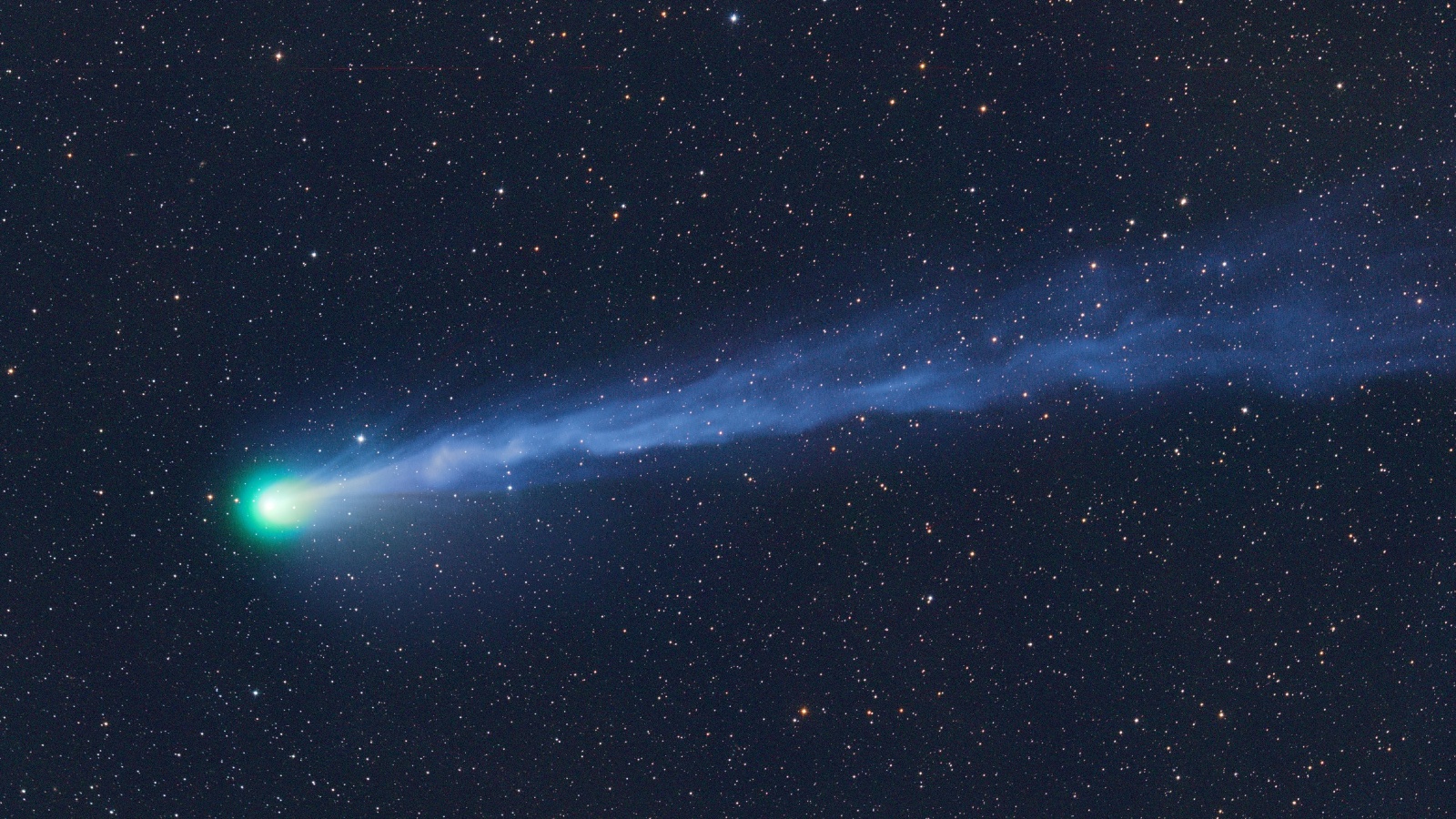Explosive 'devil comet' 12P will soon be at its brightest and best. Here's how to see it before it disappears.
The explosive green 'devil comet' 12P/ Pons-Brooks is about to reach its closest point to the sun. Here's how to see the rare visitor at its best and brightest.

A "devil comet" is about to rear its icy green head over Earth — but you'll have to look soon to spot it.
On April 21, the 10.5-mile-wide (17 kilometers) Comet 12P/Pons-Brooks, also known as the "devil comet" or "Mother of Dragons comet," will reach its closest point to the sun — known as perihelion — during which it will be about 144 million miles (232 million km) from our star.
That position should make the comet significantly brighter and easier to see in the western sky just after sunset. However, at a magnitude of about 5.9, it may not be visible to the naked eye. (The lower the magnitude, the brighter the object; Sirius, the brightest star in Earth's night sky, shines at a magnitude of -1.46.)
That makes a good telescope, camera or decent pair of stargazing binoculars essential.
April 21 and a few nights before and after will be the best time to see the comet at its brightest. Observers in northern latitudes may struggle to see the comet because it will be positioned in the glow of sunset.
Related: The 10 best stargazing events of 2024
Comets are typically at their brightest and easiest to see when they reach their closest point to Earth. That will happen in June, but by then, the comet's trajectory will mean it will be visible only from the Southern Hemisphere. In any case, true darkness is hard to come by in the Northern Hemisphere by early June.
Get the world’s most fascinating discoveries delivered straight to your inbox.
"In spite of the fact that the comet should be brightest because it is nearest to the sun, it is quite distant from us," Frank Maloney, an associate professor of astronomy and astrophysics at Villanova University in Pennsylvania, told Live Science. "Comets can exhibit major changes in brightness as the sun warms them, but unless something happens, the comet will be visible only in binoculars or a telescope."
That could change if the comet has an outburst, which it first did in July 2023. This caused it to grow a pair of demonic horns — hence its nickname the "devil comet." Recent observations have shown that the comet no longer sports these horns, likely because the space rock lost the "notch" of ice in its core that made the horns possible, Live Science previously reported.

Jamie Carter is a freelance journalist and regular Live Science contributor based in Cardiff, U.K. He is the author of A Stargazing Program For Beginners and lectures on astronomy and the natural world. Jamie regularly writes for Space.com, TechRadar.com, Forbes Science, BBC Wildlife magazine and Scientific American, and many others. He edits WhenIsTheNextEclipse.com.



